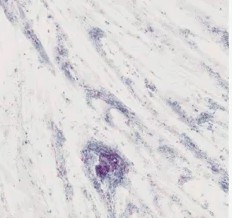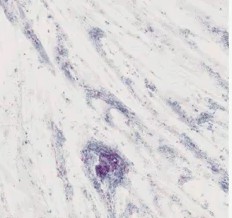The condition of abnormal development of squamous cells on the uppermost layer of the cervix is referred to as low grade squamous intraepithelial lesion. It is also known by its abbreviated form, i.e. LGSIL.
The cylinder-shaped tiny gland present in the uterus is referred to as the cervix. The uterus is a hollow organ present in a woman’s abdomen. It is the place where egg implantation and fetus development occur.
Squamous cells are a form of epithelial cells that are flat and somewhat scaly. Epithelial cells perform the function of absorbing, transferring, and allocating varied fluids and nutrients throughout the body.
There are two primary forms of squamous lesions, namely, LGSIL and high grade squamous intraepithelial lesion or HGSIL. The two terms, i.e. high grade and low grade, refer to the total area of the cervix that develops lesions and the severity of abnormal cells present therein. An HGSIL occurs over a larger portion of the cervix and the cells tend to exhibit extreme abnormality levels, while instances of low grade squamous intraepithelial lesions can be identified by the presence of lesions occurring across only a small section of the cervix along with reduced levels of cell abnormality.
Causes of low grade squamous intraepithelial lesion
Low grade squamous intraepithelial lesions are most commonly caused by infections or by minor injuries undergoing healing. It may however be noted that the exact causes of LGSIL are occasionally very difficult to find out.
It is not mandatory for an instance of low grade squamous intraepithelial lesion to always indicate the underlying presence of cancer. The presence of low grade squamous intraepithelial lesion typically signifies the growth of abnormal cells that arise before the development of cancerous cells. Hence, doctors usually consider a diagnosis of LGSIL as a warning sign for the possible formation of cervical cancer in the future.

Diagnosis
Low grade squamous intraepithelial lesions can be diagnosed via many different kinds of tests.Doctors may opt for a colposcopy or a Pap smear test to identify the presence of LGSIL.
Pap smear tests are usually carried out to verify the degree of abnormality in cells. The test involves the removal of some free cells occurring in the cervix and then placing it on a glass slide. It is later investigated under a microscope.
It is important to note that the probability of conclusively identifying the presence of low grade squamous intraepithelial lesions via the Pap smear procedure is under one percent, when insidious cervical cancer is preexisting. Additionally, it has been found that less than one percent of patients tend to eventually develop cervical cancer in the following two years, when the condition is diagnosed via the Pap smear method.
The colposcopy procedure involves the use of a magnifying instrument called a colposcope to examine and study the vagina and the cervix. This helps in diagnosing the cause of low grade squamous intraepithelial lesions.
Doctors may also perform a biopsy along with the colposcopy test. This helps in verifying and effectively confirming the presence of low grade squamous intraepithelial lesions. A biopsy involves the removal of living cells from affected body areas, creating their culture, and then studying them thoroughly.A culture is a process involving the artificial growth of cells in a lab.
Treatment of low grade squamous intraepithelial lesion
On occasions, low grade squamous intraepithelial lesions tend to disappear on their own without treatment. It is however important to remember that doctors determine the right treatment only after a correct diagnosis of the condition. Also, doctors usually opt for treatment after detecting LGSIL rather than waiting for it to heal on its own. This is because LGSIL poses the danger of progressing to cancer.
After diagnosis of low grade squamous intraepithelial lesions, doctors will determine the extent of abnormal cells growth. The below listed measurements are taken into consideration to ascertain and define if large areas of the cervix are affected by LGSIL:
- Occurrence of abnormal cells at a distance of over half an inch from the cervical bone
- Presence of LGSIL in more than two cervical quadrants and/or
- If the abnormal cells are more than an inch wide
The main focus of the many treatments for LGSIL is the complete obliteration and elimination of anomalous cells from the cervix. This aids the formation of normal cells in the affected areas, post treatment.
The varied ways in which low grade squamous intraepithelial lesions are destroyed are mentioned below:
- Heat therapy
- Laser therapy
- Destruction of abnormal cells via application of electrical current on them.
- Cryotherapy or use of sub-freezing temperatures. This treatment option cannot be used when LGSIL occurs in the cervical canal. It is generally used when only small parts of the external cervical canal is affected by the anomalous cells.
Doctors may then opt for different kinds of surgical procedures to completely eliminate any abnormal cells that have not been destroyed by the above procedures.
